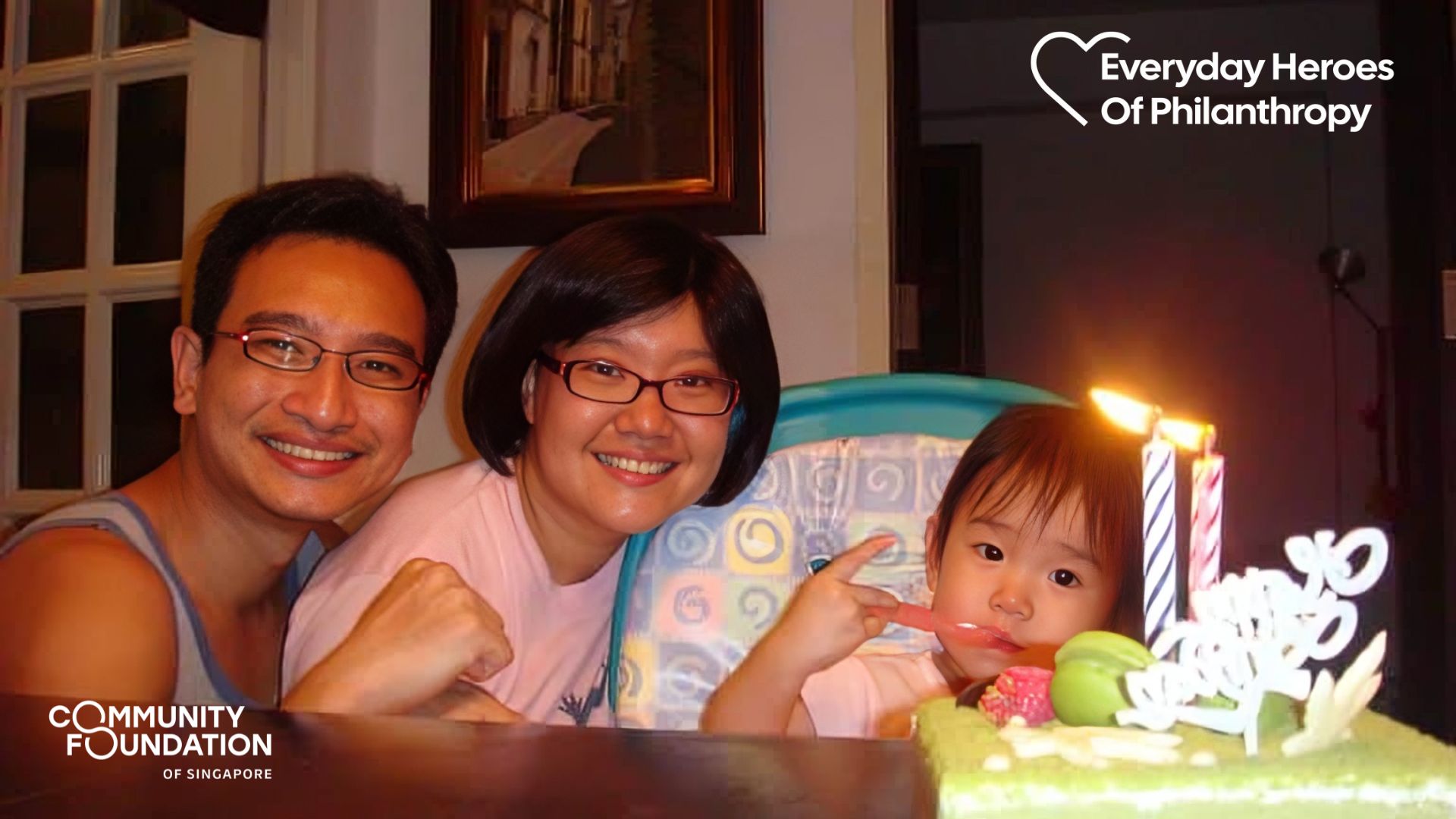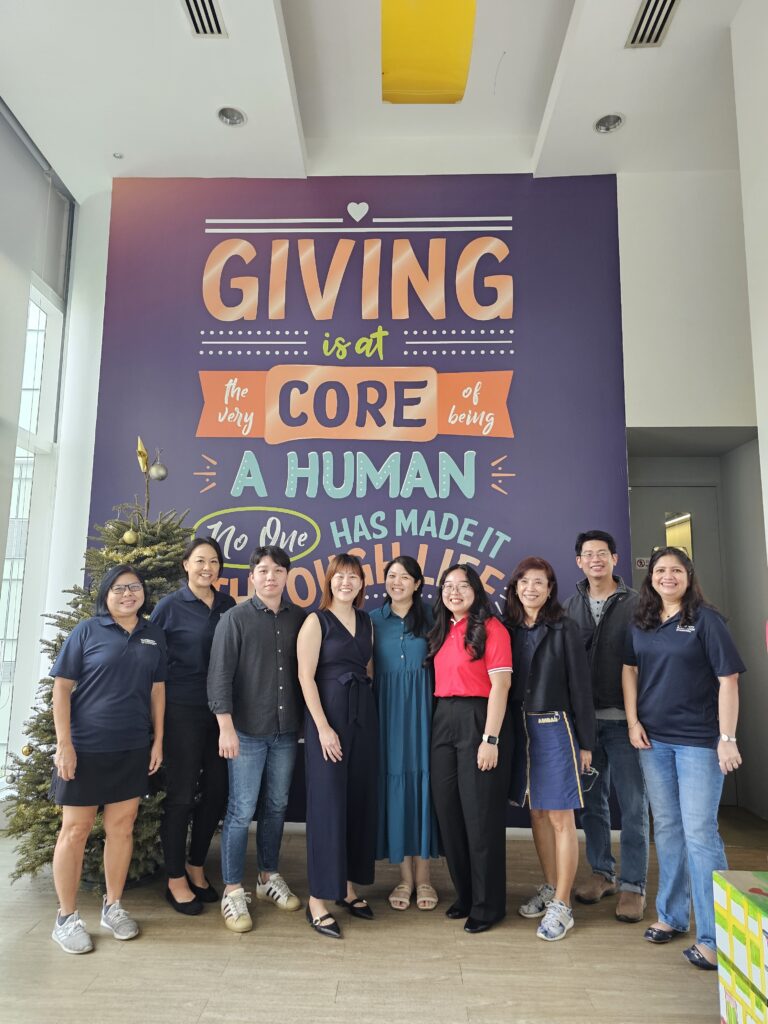Spreading the Holiday Cheer: CFS Contribute Year-End Meal to Melrose Home Residents & Staff


As the year 2023 drew to a close and office parties were being planned, the staff at CFS decided to redirect their staff celebration budget from traditional year-end parties and gift exchanges. Instead, they chose to sponsor a special New Year’s Eve dinner for the children and youth of Melrose Home, and contributed by purchasing grocery vouchers, hoping to bring joy and warmth to them during the holiday season.
At CFS’s monthly Town Hall, representatives from Children’s Aid Society Ms Serlina Huang, Manager of Community Partnerships and Ms May Su Paing, Communications Executive from Children’s Aid Society, visited along with their colleagues from Melrose Home, Ms Michelle Chen, and Mr Timothy Pang. Together they offered the CFS team valuable insights into the home’s operations and needs, enhancing their understanding of how donor contributions can benefit the beneficiaries. Ms Tricia Lee, Director of Communications & Marketing at CFS then presented grocery vouchers that the CFS staff had contributed, to support the purchase of essential items for the residents of Melrose Home.
Mr Alvin Goh, Executive Director of Children’s Aid Society shares, ‘We are grateful for this heartwarming gesture from the Community Foundation of Singapore and thank the CFS team for spreading the holiday cheer to our residents. It is heartwarming to see the community coming together to help improve the lives of those in challenging situations.’
Melrose Home, a service under the Children’s Aid Society (CAS), is a residential home for children and youths aged 6 to 21. Their residents have experienced challenging family circumstances or child protection issues that led to them being removed from their family homes.
The organisation has been a CFS grantee since 2022, and our donors have generously contributed to supporting Melrose Home in its mission. CAS is currently appealing for donations to help transform its premises at Clementi Road into “Melrose Village”, which will enable residents to have more living space, and offer purpose-built facilities, advanced counselling and psychological services. To find out how you can contribute, visit https://https://cf.org.sg/giving/ways-to-give/
References:
As the year 2023 drew to a close and office parties were being planned, the staff at CFS decided to redirect their staff celebration budget from traditional year-end parties and gift exchanges. Instead, they chose to sponsor a special New Year’s Eve dinner for the children and youth of Melrose Home, and contributed by purchasing grocery vouchers, hoping to bring joy and warmth to them during the holiday season.
At CFS’s monthly Town Hall, representatives from Children’s Aid Society Ms Serlina Huang, Manager of Community Partnerships and Ms May Su Paing, Communications Executive from Children’s Aid Society, visited along with their colleagues from Melrose Home, Ms Michelle Chen, and Mr Timothy Pang. Together they offered the CFS team valuable insights into the home’s operations and needs, enhancing their understanding of how donor contributions can benefit the beneficiaries. Ms Tricia Lee, Director of Communications & Marketing at CFS then presented grocery vouchers that the CFS staff had contributed, to support the purchase of essential items for the residents of Melrose Home.
Mr Alvin Goh, Executive Director of Children’s Aid Society shares, ‘We are grateful for this heartwarming gesture from the Community Foundation of Singapore and thank the CFS team for spreading the holiday cheer to our residents. It is heartwarming to see the community coming together to help improve the lives of those in challenging situations.’
Melrose Home, a service under the Children’s Aid Society (CAS), is a residential home for children and youths aged 6 to 21. Their residents have experienced challenging family circumstances or child protection issues that led to them being removed from their family homes.
The organisation has been a CFS grantee since 2022, and our donors have generously contributed to supporting Melrose Home in its mission. CAS is currently appealing for donations to help transform its premises at Clementi Road into “Melrose Village”, which will enable residents to have more living space, and offer purpose-built facilities, advanced counselling and psychological services. To find out how you can contribute, visit https://https://cf.org.sg/giving/ways-to-give/
References:
- Related Topics For You: CHARITY STORIES, CHILDREN, COLLABORATION, MENTAL WELLBEING, PARTNERSHIP STORIES, STORIES OF IMPACT, VIDEO, YOUTH





